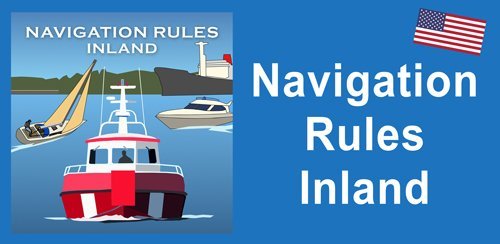Here we focus on tips and advice for staying safe on a sailboat at sea, the common causes of accidents on sailboats and what to do in an emergency.
9 ways to stay safe at sea
- Always wear a personal flotation device (PFD) or life jacket. This is the most important safety device on a sailboat and should be worn at all times while on the water.
- Have a VHF radio on board and know how to use it. A VHF radio is a crucial piece of safety equipment for communicating with other boats and shore stations in case of an emergency.
- Have a well-stocked first aid kit on board. In case of injury, it’s important to have the necessary supplies on hand to treat minor injuries and stabilise more serious ones until professional help can arrive.
- Know the weather forecast and have a plan in case of sudden changes. Be prepared for the possibility of storms or other adverse weather conditions and have a plan in place to handle them.
- Know your boat’s capabilities and limitations. Understand the performance characteristics of your boat and don’t push it beyond its limits.
- Use a heaving line to help rescue someone who has fallen overboard. A heaving line is a long, thin line with a weight attached to one end that can be thrown to someone in the water to help them get back on board.
- Keep a sharp lookout for other boats and obstacles. Always be aware of your surroundings and keep a lookout for other boats and objects in the water that could pose a threat to your vessel.
- Have a passage plan. A passage plan is a document that outlines your sailing itinerary, the crew on board, and any important details about your boat. It’s a good idea to leave a passage plan with a trusted friend or family member in case of an emergency.
- Know how to use all of the safety equipment on board. Familiarise yourself with the location and operation of all safety equipment on your boat, including fire extinguishers, life rafts, and flare guns.
Common causes of accidents on sailboats
- Human error: This can include mistakes made by the skipper or crew, such as misjudging the boat’s speed or course, or failing to follow proper safety procedures.
- Mechanical failure: This can include issues with the boat’s engines, steering, or other equipment, which can lead to accidents if not properly maintained.
- Weather conditions: Strong winds, heavy seas, and other adverse weather conditions can create hazards for sailboats.
- Collisions: Sailboats can collide with other boats, rocks, or other objects in the water, which can lead to accidents.
- Capsizing: This can occur when a sailboat is overpowered by wind and waves and flips over.
- Falling overboard: This can happen if a crew member is not wearing a personal flotation device or is not paying attention to their surroundings.
It’s important for sailboat skippers to be aware of these potential hazards and take appropriate precautions to reduce the risk of accidents.
What should do if a sudden storm occurs when I am at sea?
If you are caught in a sudden storm while at sea, it is important to take immediate action to ensure the safety of yourself and your vessel. Here are some steps you can take:
- Stay calm and assess the situation.
- If possible, head for the nearest safe harbour or sheltered area. If you are unable to do so, prepare for rough seas and strong winds.
- Secure any loose items on deck to prevent them from being blown overboard.
- Check the bilge pumps and make sure they are functioning properly.
- Keep a close watch on the weather and listen to weather reports on the radio.
- If you have a VHF radio, use it to call for help if necessary.
- If you are in a small boat and the storm is severe, consider using your anchor as a sea anchor to help keep your boat pointed into the wind and waves.
- Stay low in the boat to reduce the risk of being thrown overboard.
- If you are in a survival suit or other flotation device, try to stay as close to the boat as possible.
Remember, safety should always be your top priority when on the water. If you are unprepared or unable to handle the conditions, it is better to wait for the storm to pass or head to a safe location rather than risk injury or damage to your vessel.
What should I do if my vessel’s engine malfunctions at sea?
If your vessel’s engine malfunctions at sea, it is important to take immediate action to ensure the safety of yourself and your vessel. Here are some steps you can take:
- Stay calm and assess the situation.
- Check the fuel and oil levels and see if the problem can be easily fixed.
- If the problem cannot be easily fixed, try to sail to the nearest safe harbour or sheltered area if possible.
- If you are unable to sail to a safe location, activate your emergency signalling device, such as a flare or EPIRB (Emergency Position Indicating Radio Beacon).
- Use your VHF radio to call for help and give your location and the nature of the problem.
- If you are unable to communicate with rescue authorities, consider using other signalling methods such as flashing lights or signalling mirrors.
- Stay with your vessel if possible. It can provide some protection from the elements and make it easier for rescue personnel to locate you.
- If you are in a small boat and the conditions are rough, consider using your anchor as a sea anchor to help keep your boat pointed into the wind and waves.
- Stay low in the boat to reduce the risk of being thrown overboard.
- If you are in a survival suit or other flotation device, try to stay as close to the boat as possible.
Remember, safety should always be your top priority when on the water. If you are unable to fix the engine problem and there is no safe harbour nearby, it may be necessary to abandon the vessel and rely on your emergency signalling devices and survival equipment to attract the attention of rescue personnel.
Is it better to stay with your boat rather than abandon it?
In general, it is usually better to stay with your boat if it is possible to do so safely. Your boat can provide some protection from the elements and make it easier for rescue personnel to locate you. However, there may be situations where abandoning the vessel is the safest option. For example, if the vessel is taking on water and is in danger of sinking, it may be necessary to abandon the vessel and rely on your personal flotation device (PFD) or life raft to stay afloat.
If you do decide to abandon the vessel, it is important to follow proper procedures and use your emergency signalling devices to alert rescue personnel to your location. Be sure to bring any essential survival equipment with you, such as a flashlight, water, food, and first aid kit.
It is also a good idea to have a plan in place for what to do in the event of an emergency. This can include practising abandon ship drills and making sure you are familiar with the location and proper use of emergency signalling devices and survival equipment.
Remember, safety should always be your top priority when on the water. If you are unsure whether it is safe to stay with your vessel or if you should abandon ship, it is always best to err on the side of caution and choose the option that will provide the greatest level of safety.














